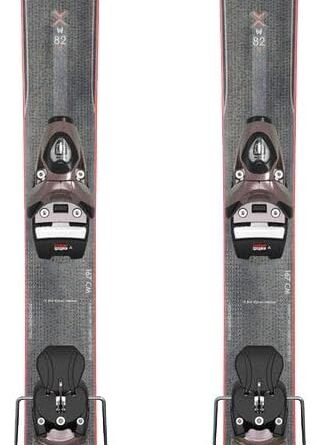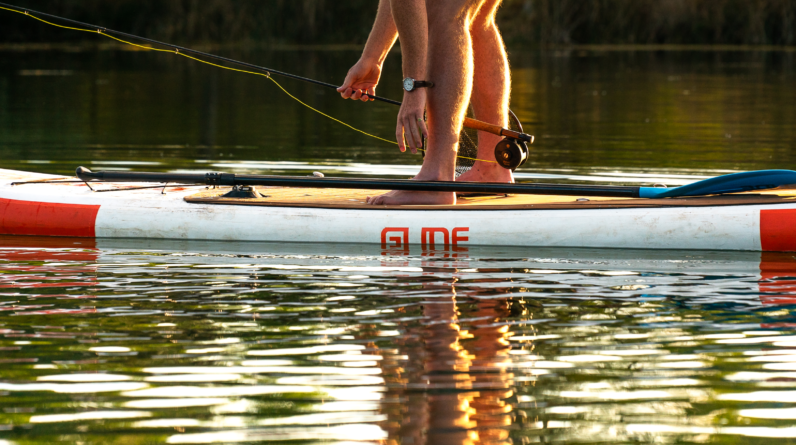
Whether you’re a seasoned paddler or new to the world of stand-up paddleboarding, one thing is for certain: proper care and maintenance of your paddleboard paddle is essential for its longevity and performance. In this ultimate guide, we’ll equip you with all the tips and tricks you need to know to ensure your paddle remains in top-notch condition. From cleaning and storage to preventative maintenance, you’ll discover everything you need to keep your paddleboard paddle in pristine shape, ready for your next adventure on the water.
Cleaning Your Paddle
Materials Needed for Cleaning
Cleaning your paddle is an essential part of its maintenance and ensuring its longevity. To clean your paddle effectively, you will need a few key materials:
-
Mild soap or paddleboard-specific cleaning solution: Using a mild soap or a cleaning solution specifically designed for paddleboards will help to remove any dirt, grime, or saltwater residue without damaging the paddle’s materials.
-
Soft-bristle brush or sponge: A soft-bristle brush or sponge will allow you to scrub the paddle without scratching or damaging its surface.
-
Water source: Having access to a water source, such as a hose or a bucket of water, will be necessary to rinse off the soap or cleaning solution.
Step-by-Step Cleaning Process
-
Rinse the paddle: Begin by rinsing the paddle with water to remove any loose dirt or debris.
-
Prepare the cleaning solution: Dilute the mild soap or paddleboard cleaning solution with water according to the manufacturer’s instructions.
-
Apply the cleaning solution: Using a soft-bristle brush or sponge, apply the cleaning solution to the entire paddle, paying extra attention to any areas with visible dirt or stains.
-
Scrub the paddle: Gently scrub the paddle’s surface with the brush or sponge, using small circular motions. Avoid applying excessive pressure, as this may damage the paddle.
-
Rinse off the soap: Thoroughly rinse the paddle with clean water to remove all traces of soap or cleaning solution.
-
Dry the paddle: After cleaning, dry the paddle using a clean, dry towel. Make sure to remove any moisture to prevent the growth of mold or mildew.
Drying Your Paddle
Properly drying your paddle is crucial to prevent moisture-related issues and ensure its durability. Here are the recommended steps for drying your paddle:
-
Wipe off excess water: After rinsing the paddle, use a clean, dry towel to wipe off any excess water from the surface.
-
Air dry: Allow the paddle to air dry in a well-ventilated area, away from direct sunlight, heat sources, or excessive humidity. This will ensure that it dries evenly and thoroughly.
-
Store in a dry place: Once the paddle is completely dry, store it in a dry location to prevent any moisture from accumulating.
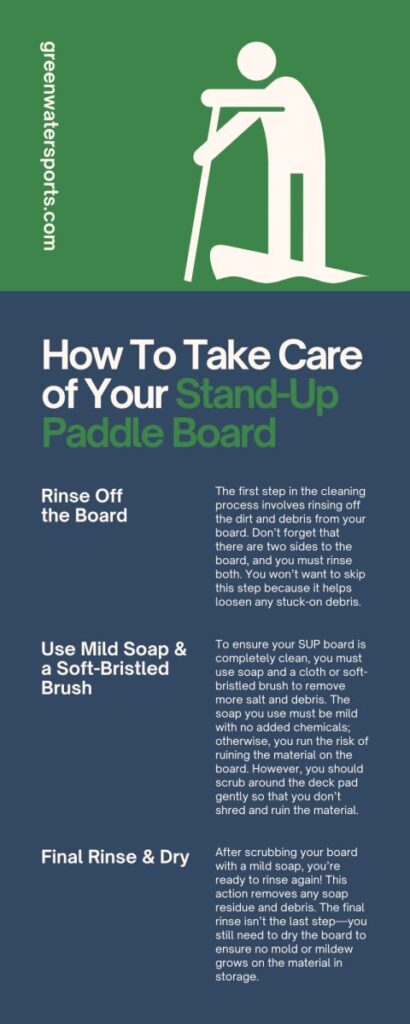
This image is property of greenwatersports.com.
Inspecting Your Paddle
Regularly inspecting your paddle is an important part of its maintenance routine. By checking for signs of wear and tear or loose components, you can address any issues early on and prevent further damage. Here’s how to inspect your paddle effectively:
Signs of Wear and Tear
Inspect the paddle for any signs of wear and tear, such as:
-
Cracks or dents: Examine the paddle shaft and blade for any cracks or dents that may compromise its structural integrity.
-
Faded graphics or color: Over time, the graphics on your paddle may fade or the color may dull. While this may not affect the paddle’s performance, you may prefer to have a visually appealing paddle.
-
Delamination: Check for any signs of delamination, which is when the layers of the paddle’s material start to separate. Delamination can impact the paddle’s strength and durability.
Checking for Loose or Damaged Components
Inspect the paddle for any loose or damaged components, such as:
-
Handle grip: Ensure that the handle grip is securely attached and not loose or showing signs of wear. A loose handle can affect your grip and paddle control.
-
Ferrule or adjustable mechanism: If your paddle has an adjustable mechanism, check that it is functioning smoothly and there is no excessive play or looseness.
-
Blade attachment: Make sure the blade is securely attached to the shaft. A loose blade can affect your stroke efficiency and power.
Replacing Worn Out Parts
If you identify any significant wear, damage, or loose components during your inspection, it may be necessary to replace certain parts. Contact the paddle’s manufacturer or a professional paddle repair service for guidance on obtaining the appropriate replacement parts and instructions for installation.
Adjusting Your Paddle
Ensuring that your paddle is properly adjusted is crucial for comfort, efficiency, and preventing unnecessary strain or injury. Here’s what you need to know about adjusting your paddle:
Determining the Correct Length
The optimal paddle length depends on various factors, such as your height, paddling style, and the type of water conditions you’ll be paddling in. As a general guideline, stand next to your paddle and raise your arm straight overhead. The top of the paddle handle should reach your wrist bone or a few inches below it.
Adjusting the Length
To adjust the length of your paddle:
-
Refer to the paddle’s manufacturer guidelines: Different paddle designs may have varying adjustment mechanisms. Refer to the manufacturer’s instructions specific to your paddle for the correct adjustment process.
-
Loosen the adjustment mechanism: If your paddle has an adjustable mechanism, loosen it to allow for length adjustment.
-
Adjust the length: While holding the handle, slide the shaft either in or out to achieve the desired paddle length based on your height and paddling style.
-
Secure the adjustment mechanism: Once you have set the paddle to the desired length, tighten the adjustment mechanism according to the manufacturer’s instructions. Ensure that it is securely locked in place.
Choosing the Right Grip
A proper grip on your paddle will enhance your control and maneuverability. Here are some tips for choosing the right grip:
-
Handle alignment: Ensure that the handle is aligned with the blade, preferably at a slight angle to match the natural positioning of your wrist.
-
Finger placement: Place your fingers comfortably around the handle, avoiding excessive gripping or tension.
-
Thumb position: Position your thumb on the edge of the paddle blade, providing additional stability and control.
Experiment with different grip styles and positions to find the one that feels most comfortable and natural for you.
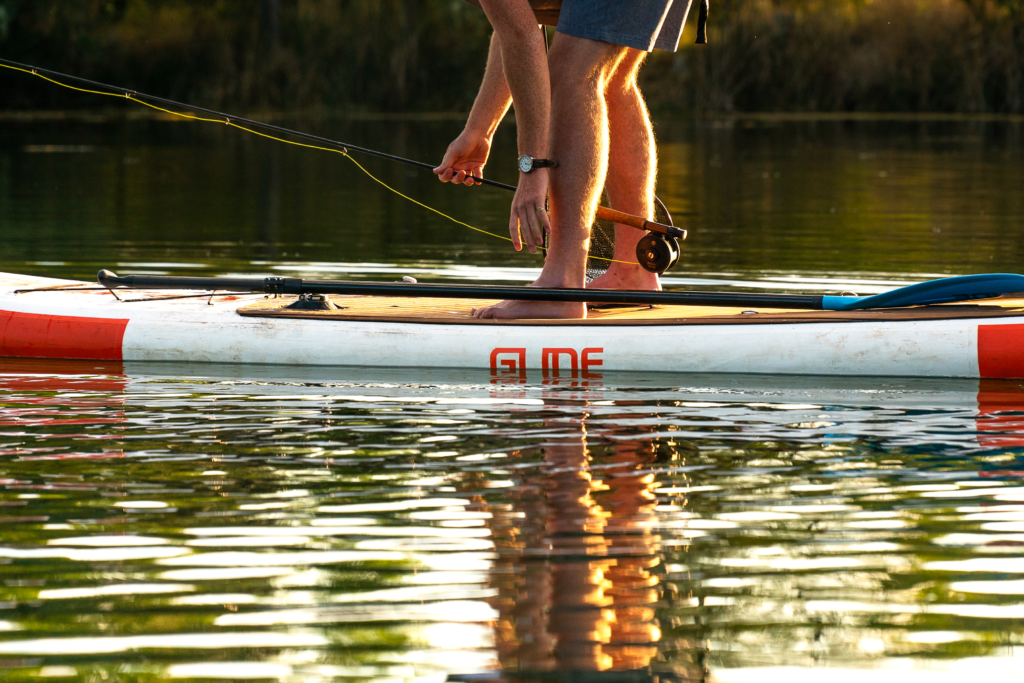
This image is property of images.surferseo.art.
Storing Your Paddle
Properly storing your paddle when not in use is vital for preserving its condition and prolonging its lifespan. Consider the following guidelines for storing your paddle:
Proper Storage Location
Choose a storage location that is dry, well-ventilated, and away from direct sunlight or extreme temperature variations. Moisture, heat, and sunlight can degrade the paddle’s materials over time, leading to cracks, warping, or other damage.
Storing the Paddle on Land
When storing the paddle on land, it is best to keep it in a horizontal position to prevent any unnecessary stress on the shaft or blade. You can use paddle racks, padded hooks, or wall mounts specifically designed for paddle storage to maintain its shape and integrity.
Storing the Paddle on Water
If you prefer to store your paddle on water, ensure that it is secured to your paddleboard using a paddle holder or leash. This will prevent the paddle from drifting away in case of wind or waves. Make sure the paddle is secure but easily accessible when needed.
Transporting Your Paddle
Safely transporting your paddle is essential to prevent damage during transit. Follow these guidelines to ensure your paddle arrives at its destination intact:
Using Paddle Covers or Bags
Using a paddle cover or bag is an effective way to protect your paddle during transport. These covers provide cushioning and prevent scratches or dings caused by contact with other objects or equipment. Choose a cover that fits your paddle’s length and blade shape snugly for optimal protection.
Securing the Paddle Properly
When securing your paddle for transport:
-
Remove any detachable components: If your paddle has a detachable blade, handle, or adjustable mechanism, remove them and store them separately to avoid damage or loss.
-
Keep the paddle flat: Lay the paddle flat on the floor of your vehicle or storage area. Avoid placing heavy objects on top of it or bending it at unusual angles that may cause stress on the shaft or blade.
Avoiding Damage during Transport
To minimize the risk of damage during transport:
-
Separate paddles: If you are transporting multiple paddles, separate them with a layer of padding or place them in individual paddle covers to prevent them from rubbing against each other.
-
Secure in a safe location: Store the paddle in a safe location, such as the trunk of your car or a designated storage compartment, to prevent it from shifting or sliding during transport.
-
Consider weather conditions: If transporting the paddle on the outside of your vehicle, ensure it is securely fixed and protected from adverse weather conditions, such as high winds or heavy rain.

This image is property of cdn2.shopify.com.
Maintaining Your Paddle
Regular maintenance is crucial to keep your paddle in optimal condition and prolong its lifespan. Here are some essential maintenance practices to follow:
Regular Inspections
Perform regular inspections on your paddle, looking for any signs of wear, damage, or loose components. Addressing any issues promptly will prevent them from worsening and potentially leading to costly repairs or replacement.
Tightening Loose Components
If you notice any loose components during your inspection, such as a loose handle grip or adjustable mechanism, tighten them according to the manufacturer’s instructions. This will ensure the paddle remains secure and functional while you are on the water.
Cleaning and Lubricating Adjustable Parts
If your paddle has adjustable parts, such as an adjustable mechanism or a collapsible shaft, periodically clean and lubricate them using a manufacturer-recommended lubricant. This will ensure smooth operation and prevent any saltwater or dirt buildup that may impede functionality.
Preventing Damage
Preventing damage to your paddle is essential for extending its lifespan and avoiding unnecessary repairs or replacements. Here are some tips to help prevent damage:
Avoiding Excessive Force
Avoid placing excessive force on your paddle, especially when navigating through obstacles, performing strokes, or propelling yourself forward. Using proper technique and paddling within your physical capabilities will reduce the risk of bending, breaking, or damaging the paddle.
Minimizing Impact with Obstacles
When paddling, be mindful of your surroundings and avoid hard collisions with rocks, buoy lines, or other solid objects. Impacting these obstacles forcefully can cause dents, cracks, or other forms of damage to your paddle.
Protecting Against UV Rays
Direct exposure to prolonged sunlight can cause discoloration, fading, and degradation of your paddle’s materials. When not in use, keep your paddle in a shaded or covered area, or use a UV-resistant cover to shield it from harmful UV rays.
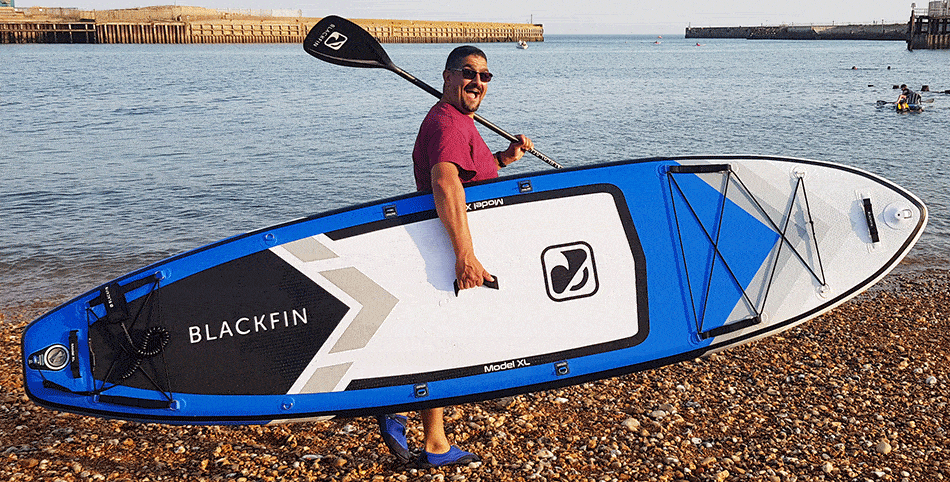
This image is property of aquasportsplanet.com.
Repairing Your Paddle
Occasionally, your paddle may require repair due to normal wear and tear or accidental damage. Here are some common damages and how to address them:
Identifying Common Damages
-
Cracks or dents in the blade or shaft: Assess the severity of the damage. Minor cracks or dents can often be repaired, but significant structural damage may require professional inspection or replacement.
-
Loose or broken parts: If you notice any loose or broken components, such as handle grips, adjustable mechanisms, or blade attachments, consider replacing them with manufacturer-approved parts or consult a professional for repair advice.
Repairing Cracks or Dents
For minor cracks or dents in the paddle’s blade or shaft, you may be able to repair them using an epoxy or adhesive specifically designed for paddle repairs. Follow the manufacturer’s instructions for the best results and ensure the repaired area is thoroughly dry before using your paddle again.
Fixing Loose or Broken Parts
If you encounter loose or broken parts, such as handle grips or adjustable mechanisms, consult the paddle’s manufacturer for guidance on obtaining replacement parts or seek assistance from a professional paddle repair service. It is crucial to address these issues promptly to ensure the paddle remains safe and functional.
Choosing the Right Paddle
Choosing the right paddle for your paddling style and preferences will greatly enhance your experience on the water. Consider the following factors when selecting a paddle:
Considering Your Paddling Style
Different paddling styles, such as recreational paddling, touring, or surfing, may require different paddle characteristics. For example, a shorter paddle with a larger blade is suitable for surfing, while a longer, narrower blade is preferable for distance paddling. Determine the primary purpose of your paddleboarding activities and choose a paddle that suits your needs.
Determining the Correct Blade Shape
Blade shape plays a crucial role in paddle performance and efficiency. Consider the following blade shape characteristics:
-
Surface area: A larger surface area provides more power, suitable for stronger paddlers or those engaging in high-intensity paddling. Conversely, a smaller surface area provides more control and is suitable for leisurely paddling or smaller individuals.
-
Blade angle: Blade angle refers to the curvature of the blade. A higher angle offers a more aggressive catch, beneficial for quick acceleration or rough conditions. A lower angle provides a smoother and more relaxed stroke, suitable for endurance and long-distance paddling.
Selecting the Right Material
Paddle materials affect weight, durability, and performance. Common paddle materials include:
-
Aluminum: Aluminum paddles are affordable, durable, and suitable for recreational paddling. However, they tend to be heavier than other materials.
-
Fiberglass: Fiberglass paddles offer a good balance between weight and durability. They are lighter than aluminum and provide improved efficiency and performance.
-
Carbon fiber: Carbon fiber paddles are the lightest and most responsive. They offer excellent performance and are preferred by experienced paddlers or those seeking maximum efficiency.
Consider your budget, desired paddle weight, and intended usage when choosing the material for your paddle.

This image is property of www.gilisports.com.
Paddling Techniques
While caring for your paddle is essential, mastering proper paddling techniques will greatly enhance your overall paddling experience. Here are some key techniques to focus on:
Proper Stroke Technique
To achieve an effective stroke:
-
Position yourself correctly on the board: Stand in the center of the board with feet shoulder-width apart for stability and balance.
-
Reach forward: Extend your arms forward, placing the paddle in the water in front of you. Paddle blades should be perpendicular to the water’s surface.
-
Engage your core: Use your core muscles to rotate your torso and initiate the stroke. Pull the paddle backward, ensuring a smooth and fluid motion.
-
Exit the water: As the paddle reaches your feet, lift it out of the water and repeat the stroke on the opposite side.
Efficient Paddling Posture
Maintaining proper posture while paddling is essential for efficiency and to prevent strain or injuries. Focus on the following aspects of your paddling posture:
-
Stand tall: Keep your back straight and avoid hunching or slouching.
-
Bend your knees slightly: Maintaining a slight bend in your knees will provide stability and absorb shock from choppy water or waves.
-
Engage your core: Activate your core muscles to stabilize your torso and provide a solid foundation for paddling.
-
Relax your grip: Avoid gripping the paddle too tightly, as it can lead to muscle fatigue or discomfort. Maintain a light and relaxed grip.
Utilizing the Correct Grip
A proper grip will optimize your control and power transfer during each stroke. Follow these tips for a correct paddle grip:
-
Top hand: Your top hand should grip the paddle handle without excessive tension, allowing for flexibility in adjusting your stroke length.
-
Bottom hand: Your bottom hand should grasp the paddle shaft firmly, providing stability and control during each stroke.
-
Wrist alignment: Ensure both wrists are in a neutral position, avoiding excessive flexion or extension. This will minimize strain on your wrists and improve paddle control.
By practicing and refining your paddling techniques, you can maximize efficiency, avoid unnecessary strain, and increase your enjoyment of paddleboarding.
Caring for your stand-up paddleboard paddle in a proper manner is essential to maintain its performance and prolong its lifespan. By following the guidelines outlined in this comprehensive article, you can ensure that your paddle remains in optimal condition for all your paddleboarding adventures. Remember to regularly clean your paddle, inspect for wear and tear, adjust it to your preferences, store it correctly, and transport it safely. Additionally, pay attention to maintaining your paddle, preventing damage, and knowing how to repair or choose the right paddle. Combined with proper paddling techniques, these practices will contribute to a rewarding and enjoyable paddleboarding experience.






